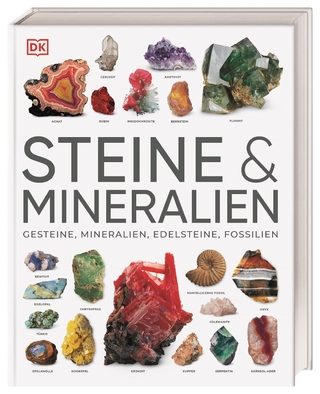
Monitoring Threatened Species and Ecological Communities
CSIRO Publishing (Verlag)
978-1-4863-0771-5 (ISBN)
Monitoring is integral to all aspects of policy and management for threatened biodiversity. It is fundamental to assessing the conservation status and trends of listed species and ecological communities. Monitoring data can be used to diagnose the causes of decline, to measure management effectiveness and to report on investment. It is also a valuable public engagement tool. Yet in Australia, monitoring threatened biodiversity is not always optimally managed.
Monitoring Threatened Species and Ecological Communities aims to improve the standard of monitoring for Australia's threatened biodiversity. It gathers insights from some of the most experienced managers and scientists involved with monitoring programs for threatened species and ecological communities in Australia, and evaluates current monitoring programs, establishing a baseline against which the quality of future monitoring activity can be managed. Case studies provide examples of practical pathways to improve the quality of biodiversity monitoring, and guidelines to improve future programs are proposed.
This book will benefit scientists, conservation managers, policy makers and those with an interest in threatened species monitoring and management.
Sarah Legge is with the Australian National University and University of Queensland and is one of Australia's leading conservation ecologists and managers. Her previous books include Monitoring Threatened Species and Ecological Communities. David Lindenmayer is a Professor at The Australian National University. He has worked on the conservation of forests and their wildlife for more than 35 years. He has published 45 books and over 1100 scientific papers, and has broad interests in conservation biology, landscape ecology, vertebrate ecology, forest ecology and woodland conservation. He has received numerous awards and is a member of the Australian Academy of Science and an Australian Research Council Laureate Fellow. Natasha Robinson performs research on threatened species monitoring and management, mammal re-introductions and fire ecology. She works closely with partner management agencies to ensure that her research improves on-ground management outcomes. Previously, she worked for the Victorian State Government in ecological fire management and biodiversity conservation, and in northern rural Vietnam developing sustainable livelihood projects that had cultural, conservation and socio-economic benefits. She completed her PhD on the importance of refuges for birds in the severely burnt forest of central Victoria. Benjamin Scheele is an ecologist with a particular interest in threatened species management and recovery. He has researched threatened species across diverse landscapes ranging from the Australian Alps to the ancient farming landscapes of Transylvania. Ben's research has strong links to management and his work on threatened amphibians has informed the development of innovative applied management responses. Darren Southwell is an ecologist with an interest in optimal monitoring, adaptive management and population viability analysis. His PhD developed population models for threatened and invasive species to inform cost-effective management decisions. Previously, he worked as a quantitative scientist at the Department of Agriculture, Fisheries and Forestry and as a field biologist at the Australian Antarctic Division. Brendan Wintle is a conservation ecologist who develops quantitative methods to support conservation decision-making and policy. He publishes in monitoring design, cost-efficient conservation spending, population viability analysis, species occupancy and distribution modelling, and Bayesian statistics with application to practical conservation problems.
Acknowledgements
Editors
List of contributors
Contributing organisations
1. Introduction: Making it count | Sarah Legge, David B. Lindenmayer, Natasha M. Robinson, Benjamin C. Scheele, Darren M. Southwell, Brendan A. Wintle, John C.Z. Woinarski and Elisa Bayraktarov
Section 1: Monitoring extent and adequacy
2. A framework for evaluating the adequacy of monitoring programs for threatened species | John C.Z. Woinarski
3. The extent and adequacy of monitoring for Australian threatened mammal species | John C. Z. Woinarski, Andrew A. Burbidge and Peter L. Harrison
4. The extent and adequacy of monitoring for Australian threatened bird species | Stephen T. Garnett and Hayley Geyle
5. The extent and adequacy of monitoring for Australian threatened frog species | Benjamin C. Scheele and Graeme R. Gillespie
6. The extent and adequacy of monitoring for Australian threatened reptile species | John C.Z. Woinarski
7. The extent and adequacy of monitoring for Australian threatened freshwater fish species | Mark Lintermans and Wayne Robinson
8. Monitoring threatened ecosystems and ecological communities | David A. Keith, Belinda J. Pellow and Matthew Appleby
9. Summary: Monitoring extent and adequacy for threatened biodiversity | Sarah Legge, Benjamin C. Scheele, John C.Z. Woinarski, Stephen T. Garnett, David A. Keith, Mark Lintermans, Natasha M. Robinson and David B. Lindenmayer
Section 2: The value of monitoring
10. The value of assessing species recovery: towards a national framework | Peter Latch
11. Shorebird monitoring in Australia: a successful long-term collaboration among citizen scientists, governments and researchers | Birgita D. Hansen, Robert S. Clemens, Eduardo Gallo-Cajiao, Micha V. Jackson, Richard T. Kingsford, Grainne S. Maguire, Golo Maurer, David Milton, Danny I. Rogers, Dan R. Weller, Michael A. Weston, Eric J. Woehler and Richard A. Fuller
12. A tale of threatened frogs: demonstrating the value of long-term monitoring | Graeme R. Gillespie, David Hunter, Greg Hollis, Benjamin C. Scheele and Matt West
13. Insights from multi-species mammal monitoring programs in the Upper Warren, Western Australia | Adrian Wayne
14. The multiple benefits of monitoring threatened species – Leadbeater’s possum as a case study | David B. Lindenmayer
15. Summary: The value of monitoring threatened biodiversity | David B. Lindenmayer, Natasha M. Robinson, Benjamin C. Scheele and Sarah Legge
Section 3: Monitoring frameworks
16. Why, what, how much, and is it worth it? Questions to answer before spending a penny on monitoring | Brendan A. Wintle
17. Saving our Species: cost-effective monitoring and evaluation for a large-scale threatened species program | James Brazill-Boast
18. Designing a monitoring framework for Australian Wildlife Conservancy, a national conservation organisation | John Kanowski, Liana Joseph, Rod Kavanagh and Atticus Fleming
19. Parks Australia monitoring for threatened species | Kerrie Bennison and Judy West
Section 4: Monitoring program design
20. Optimising broad-scale monitoring for trend detection: review and re-design of a long-term program in northern Australia | Luke D. Einoder, Darren M. Southwell, Graeme R. Gillespie, Alaric Fisher, José J. Lahoz-Monfort and Brendan A. Wintle
21. Determining trends in irruptive desert species | Chris R. Dickman, Aaron C. Greenville and Glenda M. Wardle
22. The challenge of monitoring coastal marine mammals | Helene Marsh, Lyndon Brooks and Rie Hagihara
23. The technology revolution: improving species detection and monitoring using new tools and statistical methods | José J. Lahoz-Monfort and Reid Tingley
24. Summary: Monitoring frameworks and monitoring program design for threatened biodiversity |
Darren M. Southwell
Section 5: Community participation
25. Threatened species monitoring on Aboriginal land: finding the common ground between Kuka, Jukurrpa, ranger work and science | Rachel Paltridge and Anja Skroblin
26. Involving volunteers in threatened plant monitoring in South Australia: the best laid plans of plants and men | Doug Bickerton
27. Community involvement in monitoring threatened species: a WWF perspective | Jessica Koleck
28. What makes a successful citizen science program? | Kerryn Herman
29. Summary: Community participation in monitoring for threatened biodiversity | Natasha M. Robinson, Sarah Legge and Ben C. Scheele
Section 6: Monitoring and adaptive management
30. Recovery of the red-finned blue-eye: informing action in the absence of controls and replication | Jim Radford, Rob Wager and Adam Kerezsy
31. The national malleefowl monitoring effort: citizen scientists, databases and adaptive management | Joe Benshemesh, Darren M. Southwell, Jose J. Lahoz-Monfort, Cindy Hauser, Libby Rumpff, Michael Bode, Tim Burnard and Brendan A. Wintle
32. Difficulties in fitting an adaptive management approach to threatened species monitoring | David B. Lindenmayer
33. Summary: Monitoring and adaptive management of threatened biodiversity | Ben C. Scheele and David B. Lindenmayer
34. Organisational perspectives on threatened species monitoring | Natasha M. Robinson, Rachel Morgain, Sarah Legge, Ben C. Scheele, David B. Lindenmayer, Darren M. Southwell, Kerrie Bennison, Joe Benshemesch, Doug Bickerton, Lyndon Brooks, Oberon Carter, Chris Dickman, Glen Ehmke, John Kanowski, Jessica Koleck, Mark Lintermans, Helene Marsh, Damon Oliver, Rachel Paltridge, Jim Radford, Anja Skroblin, Adrian Wayne and John C. Z. Woinarski
35. Essential principles to guide monitoring of threatened biodiversity | Natasha M. Robinson, Sarah Legge, Benjanim C. Scheele, David B. Lindenmayer, Darren M. Southwell, Brendan A. Wintle, Kerrie Bennison, Joe Benshemesch, Doug Bickerton, Lyndon Brooks, Oberon Carter, Chris Dickman, Luke Einoder, Graeme Gillespie, Kerryn Herman, John Kanowski, Jessica Koleck, Jose J. Lahoz-Monfort, Peter Latch, Mark Lintermans, Helene Marsh, Rachel Paltridge, Jim Radford, Anja Skroblin, Adrian Wayne and John C. Z. Woinarski
Index
| Erscheinungsdatum | 07.01.2018 |
|---|---|
| Zusatzinfo | Illustrations |
| Verlagsort | Melbourne |
| Sprache | englisch |
| Maße | 170 x 245 mm |
| Gewicht | 1171 g |
| Themenwelt | Sachbuch/Ratgeber ► Natur / Technik ► Natur / Ökologie |
| Sachbuch/Ratgeber ► Natur / Technik ► Naturführer | |
| Naturwissenschaften ► Biologie ► Ökologie / Naturschutz | |
| Naturwissenschaften ► Biologie ► Zoologie | |
| Sozialwissenschaften ► Ethnologie | |
| Sozialwissenschaften ► Soziologie | |
| ISBN-10 | 1-4863-0771-X / 148630771X |
| ISBN-13 | 978-1-4863-0771-5 / 9781486307715 |
| Zustand | Neuware |
| Haben Sie eine Frage zum Produkt? |
aus dem Bereich


